German Shepherd Colors: Standard, Faulty, Rare & More
When you purchase through links on our site, we may earn a commission. Here’s how it works.
The German Shepherd is an extremely popular dog in America. They consistently find themselves in the country’s top five most popular dog breeds, according to the American Kennel Club (AKC). Not only are they widely used as work dogs in the police, military services, search and rescue, and therapy work. But they are also highly regarded as family pets. German Shepherds are hardworking, courageous, loyal, loving, and fun dogs.
Table of Contents
But it isn’t just their personality that we adore. They are handsome dogs that appear solid and agile with soft lines, large ears, and sweet eyes. Their coat also plays a massive part in their appeal. The typical German Shepherd coat is black with tan markings, but there are many more coat types than this. Are they normal? Are they allowed? If your pup is a family dog, coat color doesn’t matter much. But if they are show dogs, coat color is really important.
Here we explore all of the different German Shepherd coat colors and more. We look at the coat colors the AKC allows, the faulty ones, and the one coat color that is immediately disqualified. Are you interested to learn more about the German Shepherd rainbow? Let’s take a closer look.
German Shepherd Breed Standard
There are many opinions about the German Shepherd‘s appearance and what they should and shouldn’t look like or be. Plus, different kennel clubs in other countries can have different breed standards. The breed standard is where the expectation of a dog’s appearance and personality are officially set out. Here is what the AKC’s German Shepherd breed standard says about their color:
The German Shepherd Dog varies in color, and most colors are permissible. Strong rich colors are preferred. Pale, washed-out colors and blues or livers are serious faults. A white dog must be disqualified.
American Kennel Club
Accepted German Shepherd Coat Colors
Let’s take a closer look at what the acceptable German Shepherd colors are. Some are very common, and some are very rare.
Black And Tan
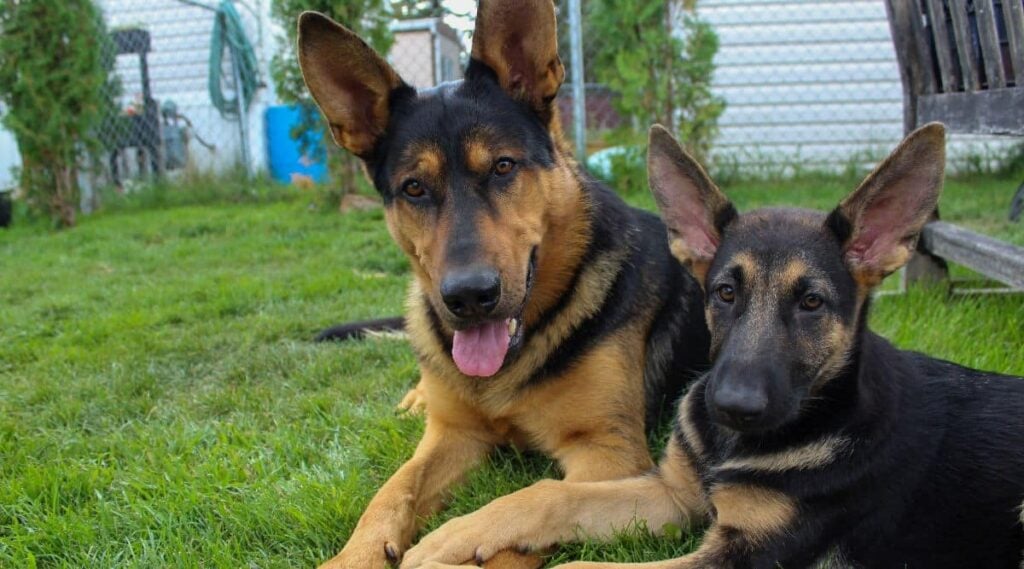
Black and tan German Shepherd coats are the most common and most associated with the breed. The tan can vary in shades, from rich tan to pale. In this breed and many others, the tan color is sometimes called rust or mahogany. But essentially, it is the same color.
Black And Red
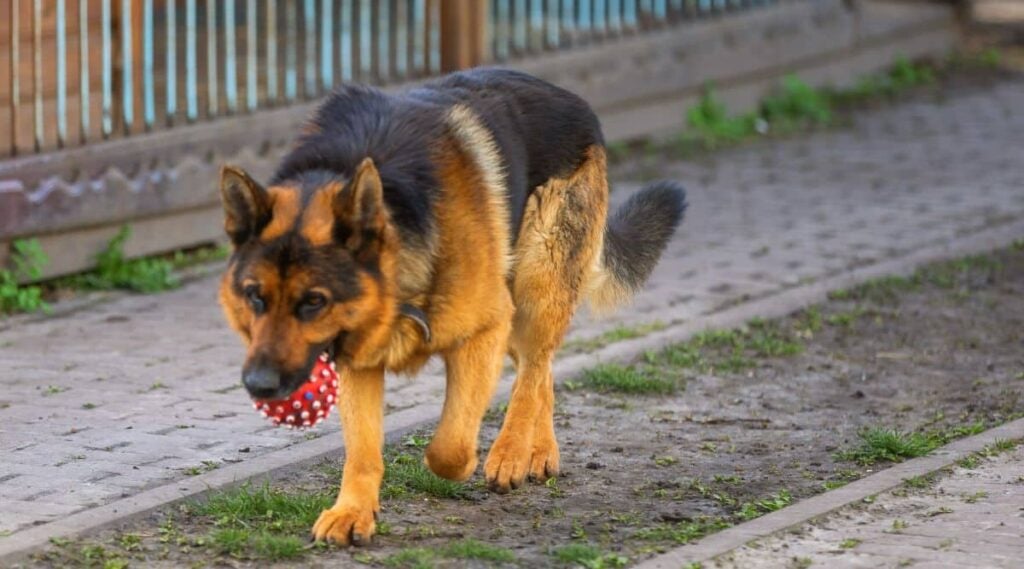
Black and red German Shepherds are essentially the same as black and tan, except the tan is rich red.
Sable
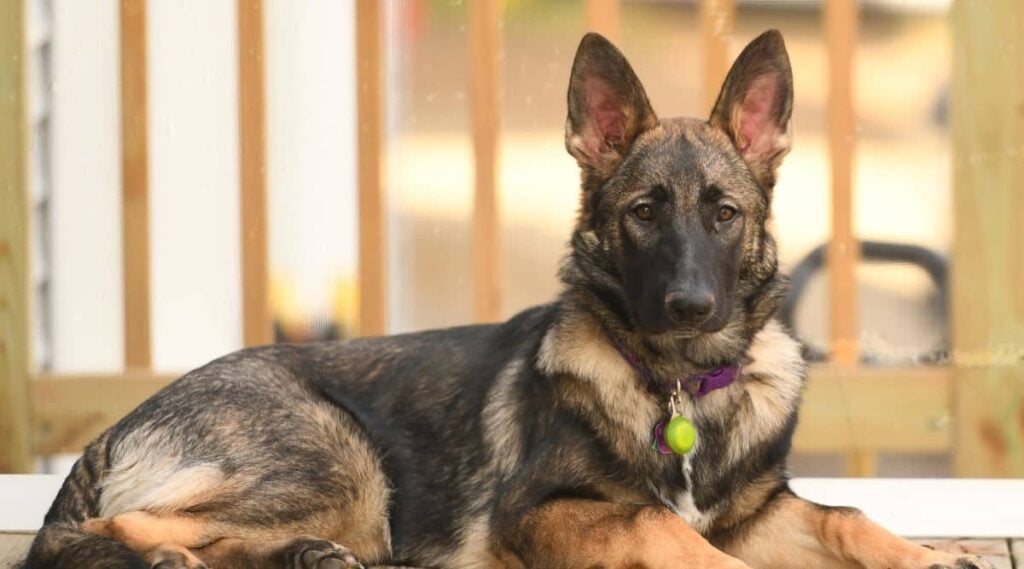
Sable refers to a color pattern where dark is the most common color in the coat, combined with red or gray colors, without any apparent pattern or distinct areas of color. If their coat color is black with red, they are a red sable, and if they have a black and gray coat, they are gray sable, etc. Sables are more common in working or family pet lines.
Bi-Color
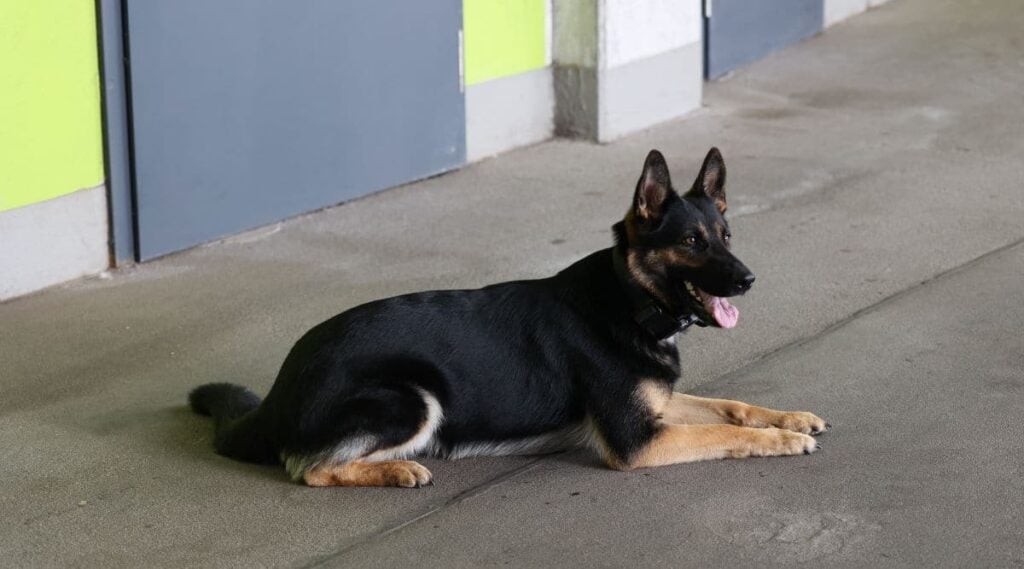
There is a lot of debate about the bi-color German Shepherd coat, whether it is a color in its own right or simply a black and tan coat with unique markings. A bi-color coat is predominately black with tan markings on its legs, chest, and sometimes eyebrows.
Black
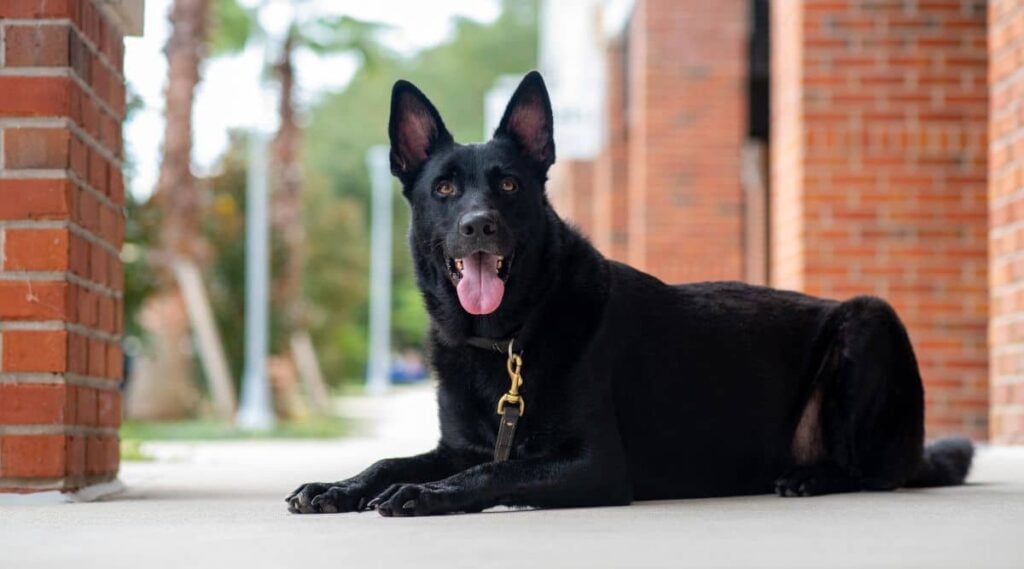
Pure black German Shepherds are rare. This, combined with the fact that they are stunning pups, means that many people want them. Be wary of breeders selling you a dog based on coat color or charging an exceptionally high price for them. They are the same as any other German Shepherd.
Black And Cream
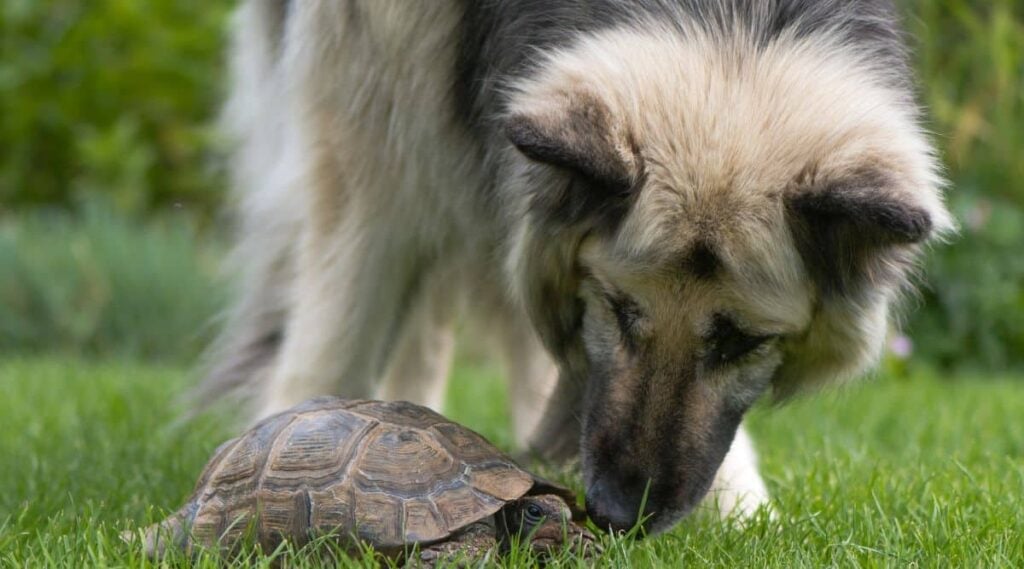
Black and cream German Shepherds are usually described as black and tan but a very light shade of tan. However, some breeders might describe them as black and cream. They are typically black on their back and cream on their bottom.
Black And Silver
This is not a typical German Shepherd coat either because they are often confused with a gray sable or black and very light gray tan. Again, some breeders might describe them as black and silver. They tend to be black on their back and gray on their rear.
Faulty German Shepherd Coat Colors
Here are some colors in the German Shepherd breed that are faulty. In the show ring, they are heavily penalized. But because they are so beautiful and rare, many families want them. Let’s take a close look at them.
Gray
The color gray is another rare color. The AKC sees it as a severe fault and is rarely seen in the working line world. Some breeders mistake washed-out blue pups for gray, which is a solid gun gray. Solid gray coats are stunning and sought after, with a higher price.
You need to be wary of breeders who might try to sell a mixed breed claiming it to be a gray German Shepherd. There is a slight chance it could be a wolf hybrid because gray is common in the wolf line. This could cause problems in the future because wolf-hybrids are challenging to handle, and there are ownership restrictions too.
Blue
Blue German Shepherds are considered a serious fault by the AKC and can be light, dark, and steel shades. There is a lot of controversy surrounding this coat color. Some say that despite being blue, they are still purebreds and should not be a fault. Others say that the blue is a gene mutation and should not breed.
Blue is a popular coat color in many breeds and a sought-after shade. For this reason, some breeders might try to breed this color over the importance of health. Look for a reputable breeder who also has commonly colored Shep pups and doesn’t bump the price of blue dogs.
Liver
One of the rarest coat colors in the German Shepherd bloodline is liver, and the AKC sees it as a severe fault in the German Shepherd family because it results from a recessive gene. Liver colors range from a light, tawny hue to a deep, rich chocolate shade. Their nose and other features are typically light brown to pink in color. Like other rare colors, be sure to work with a reputable breeder that breeds for health and not the shade for a more significant profit.
Disqualified German Shepherd Coat Colors
According to the breed standard, white is the only German Shepherd coat color that is automatically disqualified. A white color coat results from a recessive gene, meaning they must inherit this gene from both parents. White German Shepherds are rare. The AKC automatically disqualifies them, but many German Shepherd fanciers admire them because they are rare and very beautiful. This means they can carry a high price tag.
If you are thinking about a white German Shepherd, you need to be careful they are not German Shepherds suffering from albinism. A common misconception is that white German Shepherds are albino dogs, but they are not. An albino dog experiences many health problems, meaning a sick dog and costly vet bills. White German Shepherds have dark noses and other black features. Albino dogs have no color at all. White Germans Shepherds look very similar to White Swiss Shepherd Dogs.
Other German Shepherd Coat Colors
The other colors are not mentioned in the AKC’s list of German Shepherd colors. Some of them exist but are not accepted by the AKC. There is one color that doesn’t exist in the Shepherd bloodline. However, there is a lot of misinformation about them. Let’s look at the other rare and beautiful German Shepherd coat colors.
Panda
A panda coat is sometimes referred to as a piebald or spotted black and white coat, resulting from a gene mutation. The panda coat only occurs in one line of German Shepherds, and the first time it was seen was in 2000. A panda coat on a German Shepherd makes them look a lot like a Border Collie mix. However, they are pure German Shepherds.
The panda coat consists of symmetrical markings of white on the forehead, muzzle, chest, collar, and tip of the tail. The amount of white can vary from dog to dog. They are rare but highly desirable coats, which inflates the price. But it can mean breeders focus purely on achieving the color rather than the puppy’s health.
Golden
The golden coat color in the German Shepherd line is rare. Some breeders call this color blonde. Some Shepherd puppies are born gold but go darker with age. So a golden-colored adult is much rarer than a golden puppy. A solid gold German Shepherd named Lucy took the internet by storm, stunning German Shepherd lovers worldwide with her pure golden coat.
Many people confuse a golden German Shepherd with the Golden Shepherd, a German Shepherd, and a Golden Retriever mix. If you are considering adopting a golden-colored Shep, you need to research the breeder to ensure they are responsible. Some breeders might try and sell you a golden mixed breed for a pedigree price.
Merle
Merle is not an actual color in the German Shepherd line. It simply does not exist. If you find a “merle” German Shepherd puppy for sale, the chances are it isn’t a German Shepherd at all. At best, it is a mixed breed German Shepherd. Please avoid any breeder trying to sell you a Merle German Shepherd because they are either lying to you or are inexperienced breeders. Either way, it probably means there are other things about the pup they aren’t being truthful about.
On top of this, in some instances, Merle coat colors are linked to health problems. If two merle dogs mate, they have a higher chance of creating a “double merle” dog. These pups have a reported increase in significant health issues such as deafness and blindness.
German Shepherd Coat Types

Not only does the German Shepherd enjoy an incredible array of coat colors, but they also have several coat types too. All the colors above come in all coat types. Only Sheps with an undercoat are permissible in the show ring. The four German Shepherd coat type includes:
- Long with an undercoat
- Short with an undercoat
- Medium with an undercoat
- Long without an undercoat
Frequently Asked Questions
What German Shepherd Coat Color Is Right For Me?
There is more to a German Shepherd than their coat color, and you should focus more on their personality than coat color. They might be the most beautiful Shep in the world, but if their personality doesn’t match your needs, they aren’t the right pup for you. The German Shepherd Dog Club Of America offers advice on how to pick the right puppy for you.
Does A Coat Color Affect A Dog’s Personality?
No, the color of a dog’s coat does not affect a dog’s personality. Unless the German Shepherd is an albino dog or a double merle offspring, they are likely to be ill often, resulting in an unhappy dog.
Are Some German Shepherd Coat Colors More Expensive Than Others?
Yes, some coat colors are more expensive than others. However, a responsible breeder should not price their puppies according to coat color. Some breeders might try to sell our black or white German Shepherds for more than their black and tan counterparts. But they are the same dog breed with the same characteristics.
Final Thoughts
Now you have all the information you need to know about German Shepherd coat colors. From the classic black and tan coat to the rare liver color and everything in between. There’s a lot of misinformation out there when it comes to coat colors. But unless you plan on showing your German Shepherd in the showing, their coat color doesn’t hold much importance. Being happy and healthy is the most important thing. Plus, they are all stunning in their own way.



